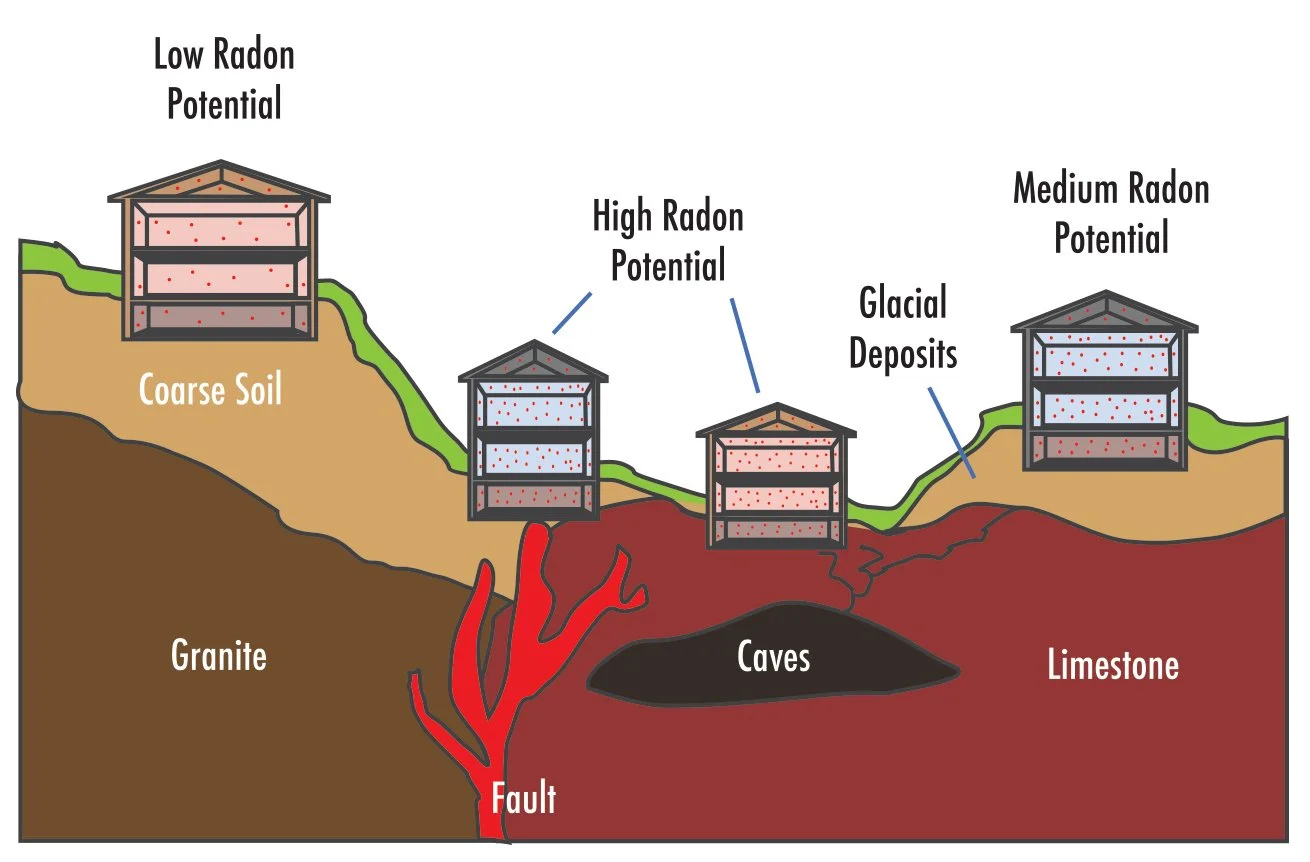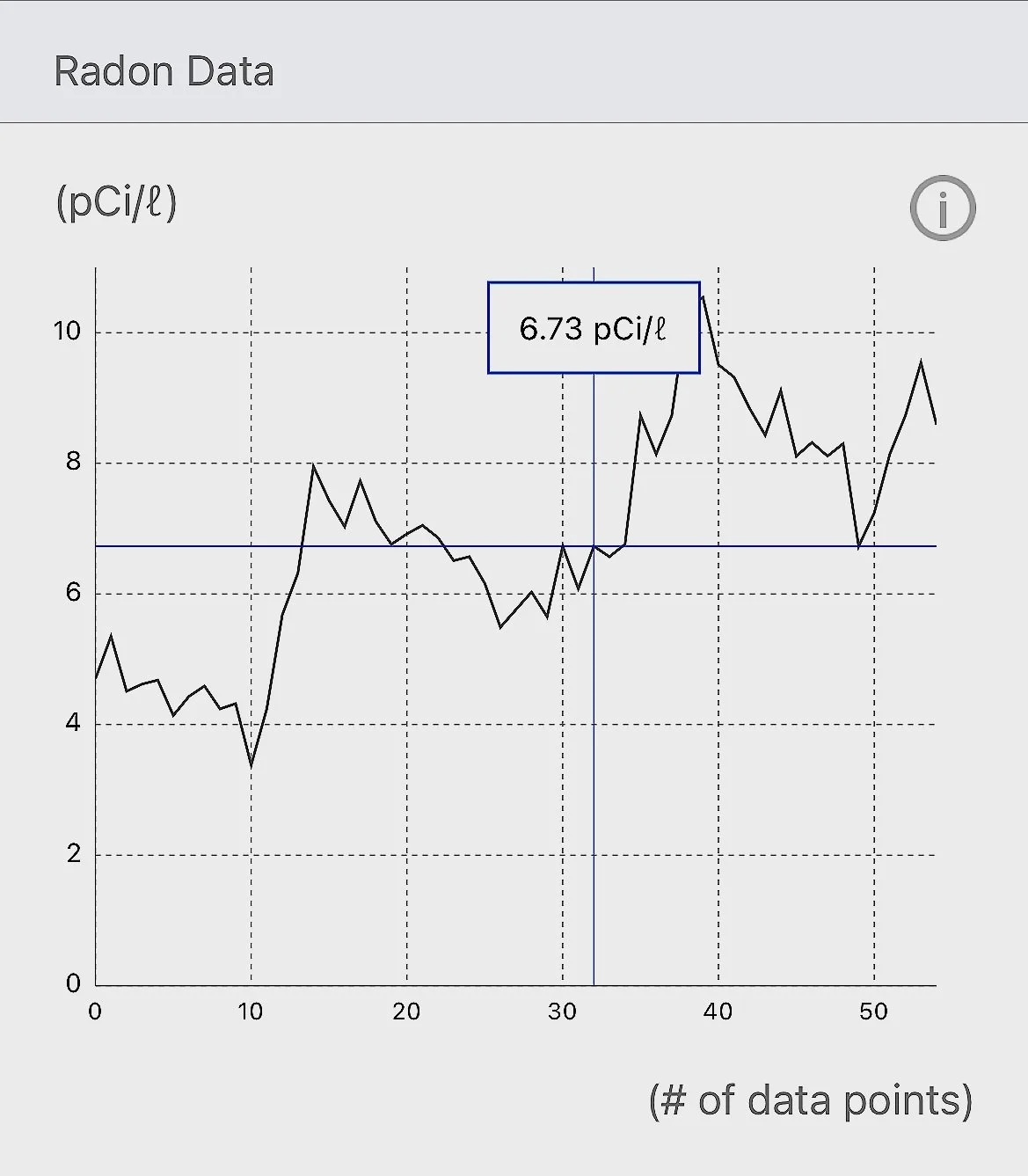Radon Inspections
What is Radon?
What should you expect from a Radon Inspection?
-

Where does Radon come from?
Radon is a radioactive gas that is naturally occurring in the Earth’s crust. Radioactive Decay is the process unstable nuclei losing energy by radiation. Uranium decays into Radium; then Radium decays into Radon, which is a gas. Certain soil types and areas of the Earth’s surface contain more Radon than others. These areas contain more Uranium in rocks and soil than others leading to more amounts of radioactive decay.
-

How does Radon enter?
Radon enters the home most commonly through cracks or holes in the foundation. This can be a sump pump opening, holes in foundation walls from pipes/utilities/changes in the sealing of the foundation over time or even just cracks in the floor. The air flow pressure in the home carries the gas from the basement to the rest of the home. More uncommon is Radon in the well water from high levels of Uranium in the soil surrounding it.
-

How to make decisions about Radon.
Radon is measured in units of picocuries per liter (pCi/L) of air. The inspection results provide the number pC/L in the air over the short-term testing period. The action level is 4 pC/L. This is the level in which a mitigation system is recommended. Under 4 pC/L is considered a level that does not require a mitigation system. There is no understood level of Radon by the EPA considered “safe,” however, the EPA recommends considering a mitigation system if the reading is averaged between 2 pC/L and 4 pC/L.
ERO Inspection Services performs Radon Inspections using the RadonEye testing platform. It is a digital continuous testing unit that has its first reading in 10 minutes and offers reliable results in 1 hour. We set up the RadonEye in the lowest part of the home and leave it to read the air for at least 48 hours with closed home conditions. We can then provide the reading of the RadonEye in a report format to show the levels of Radon Gas over time.
Once we have the results of the test, we can use the radon decision making chart to recommend the next steps. Radon mitigation systems can reduce radon levels in the home to virtually zero. There will always be some tiny amount of radon gas in the air, and a system is not required when the results are below 4 pCi/L. However, with many things in the home, the homeowner can choose to have a mitigation system installed whether the action level is reached or not.
RadonEye Graph data.

